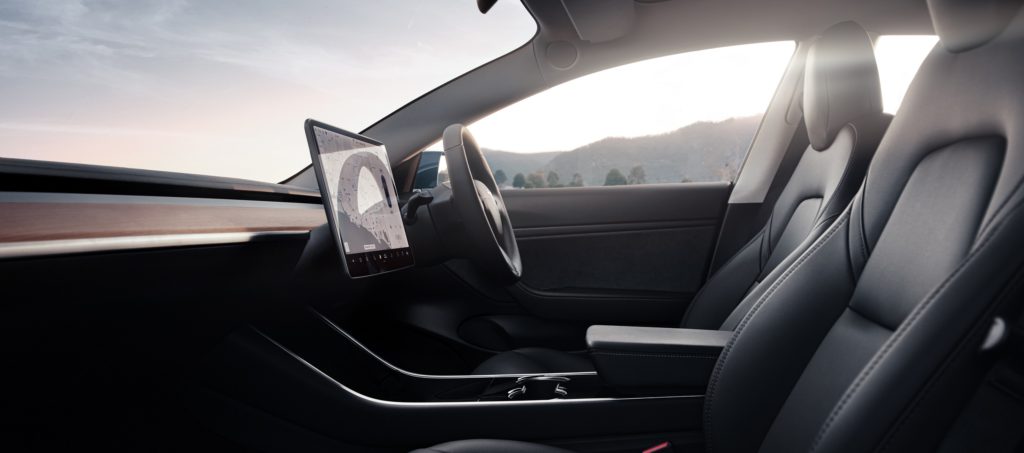Why the quality and functionality of a car influence its future residual value
16 June 2020

In part 4 of a five-part series, Autovista Group’s Car To Market & Consulting team explores quality and functionality and their impact on residual values.
Predicting the residual value (RV) of a brand new car is not easy. For this reason, experts usually analyse how similar models available on the market depreciate and, with statistical analysis and historical data, determine how the new vehicle will behave during its lifecycle. Accurate evaluation of the characteristics of the model complement this method.
Among other elements, an accurate forecast of the future RV on the used-car market of a new model includes the quality of materials that customers can perceive from it, and whether that model fits their needs by being comfortable, spacious and easy to use.
When entering the car, the quality of materials is gauged by touching, looking, and hearing and even smelling. A first impression is crucial to perceive whether construction has been done with precision and care. For potential used-car buyers, it is important to notice that materials are high quality, robust, both soft and solid to touch – even years after the first purchase of the car. In addition, accurate assembly and workmanship help enhance the reputation of the model, benefitting RVs. Conversely, poor quality materials and finishes in the new model will be immediately reflected on the future used car, with aged elements and areas, scratched surfaces and excessive and annoying noises, conveying a bad first impression and look shabby right from when the potential buyer enters the car, lowering demand and value.
Practical solutions
A valuable car should not only have good quality, but also be functional. Practical solutions such as storage compartments (for quantity and size) and specific solutions to secure smartphones, wallets, glasses, umbrellas and other objects, together with large boot capacity and convenient accessibility, are very important to avoid potential rejections from used-car customers. Appropriate allocation of controls, comfortable seats, headroom and space for feet, legs and shoulders are also key aspects, especially for long travels, and therefore highly appreciated by drivers, but also by passengers, (e.g. small cabins may create carsickness).
Intuitive functions and controls are also very important for potential used-car buyers as complex functions in a quick test provoke irritation (also, used-car customers are not always helped by a well-trained sales representative with the risk of not knowing all the benefits of the car, and therefore, they could be unwilling to pay for unclear services). Receiving good reactions from controls is crucial too (the sound of a click is key to knowing what you are doing while driving and avoids moving eyes from the road).
New and used-car buyers are increasingly focusing on technology and multimedia, and touchscreens are the more obvious reference point in this regard. Therefore, this element should convey decent resolution, rapid response and good quality, both in terms of readability and layout, in order to keep the attractiveness in the future used car.
Another aspect influencing the future RV of a car is its performance on the road, which is highly associated with customers’ expectations. Potential buyers will expect that, for example, a sporty car is fun and dynamic, while a large family car provides safe and comfortable driving. If expectations are not met, the potential buyer could be disappointed, reducing interest and harming RVs.
Besides general expectations and preconceived ideas, used-car buyers will demand models with positive impressions in terms of acceleration, stability and short braking distance. Also, smooth and precise gear changes, and good road handling are highly appreciated. Potential customers, according to their expectations, will consider whether suspension is too stiff or too soft and if the steering is light enough to operate and direct as desired. In addition, noise and vibrations are another element that could either add a feeling of comfort or irritate a potential buyer.
In summary, OEMs should introduce high-quality standards in materials in the new model to ensure that the vehicle’s appearance will show long-lasting materials in the future used car, even after use, supporting beneficial RVs. This, in combination with fulfilled expectations in functionality and driving performance will help RVs. These elements, together with the design of the car will be difficult to modify over the life cycle of the model and, therefore, the right decisions in the manufacture of the new car will result in a good residual value.
Ana Gutierrez, head of Car to Market & Consulting, senior market analysts Guillermo Iniguez and Stefano Adami and senior project manager, consulting Ralf Sulzbach contributed to this article.
ou can read the rest of the residual value series articles by following the links below:
Part 1 – Which factors decide your future model’s residual value?
Part 2 – How does a car’s design influence its future residual value?
Part 3 – Why do cost-performance-related vehicle factors influence future residual value?
Part 5 – Why sales planning influences future residual values